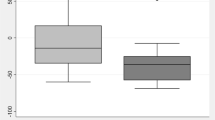Abstract
In the last decades propofol became established as an intravenous agent for the induction and maintenance of both sedation and general anesthesia procedures. In order to achieve the desired clinical effects appropriate infusion rate strategies must be designed. Moreover, it is important to avoid or minimize associated side effects namely adverse cardiorespiratory effects and delayed recovery. Nowadays, to attain these purposes the continuous propofol delivery is usually performed through target-controlled infusion (TCI) systems whose algorithms rely on pharmacokinetic and pharmacodynamic models. This work presents statistical models to estimate both the infusion rate and the bolus administration. The modeling strategy relies on multivariate linear models, based on patient characteristics such as age, height, weight and gender along with the desired target concentration. A clinical database collected with a RugLoopII device on 84 patients undergoing ultrasonographic endoscopy under sedation-analgesia with propofol and remifentanil is used to estimate the models (training set with 74 cases) and assess their performance (test set with 10 cases). The results obtained in the test set comprising a broad range of characteristics are satisfactory since the models are able to predict bolus, infusion rates and the effect-site concentrations comparable to those of TCI. Furthermore, comparisons of the effect-site concentrations for dosages predicted by the proposed Linear model and the Marsh model for the same target concentration is achieved using Schnider model and a factorial design on the factors (patients characteristics). The results indicate that the Linear model predicts a dosage profile that is faster in leading to an effect-site concentration closer to the desired target concentration.




















Similar content being viewed by others
References
Absalom A, Struys M. Overview of target controlled infusions and total intravenous anaesthesia. Academia Press, Gent; 2007.
Fahrmeir L, Tutz G. Multivariate statistical modelling based on generalized linear models. Springer, Berlin; 2001.
Fechner J, Albrecht S, Ihmsen H, Knoll R, Schwilden H, Schuttler J. Predictability and precision of “target-controlled infusion” (TCI) of propofol with the “Disoprifusor TCI” system. Anaesthesist 1988;47, 663–668.
Gambús P, Jensen EW, Jospin M, Borrat X, Martinez Pallí G, Fernández-Candil J, Valencia JF, Barba X, Caminal P, Trocóniz IF. Modeling the effect of propofol and remifentanil combinations for sedation-analgesia in endoscopic procedures using an adaptive neuro fuzzy inference system (ANFIS). Anesthesia and Analgesia 2011;112(2), 331–339.
Glen J. The development of ’Diprifusor’: a TCI system for propofol. Anaesthesia 1998; 53(Suppl 1), 13–21.
Gray J, Kenny G. Development of the technology for ’Diprifusor’ TCI systems. Anaesthesia 1998;53(Suppl 1): 22–27.
Hallynck T, Soep H, Thomis J, Boelaert J, Daneels R, Dettli L. Should clearance be normalised to body surface or to lean body mass?. Br J Clin Pharmacol. 1981;11(5), 523–26.
Hamby DM. A review of techniques for parameter sensitivity analysis of environmental models. Environ Monit Assess 1994;32, 135–154.
Leslie K, Clavisi O, Hargrove J. Target-controlled infusion versus manually-controlled infusion of propofol for general anaesthesia or sedation in adults. Cochrane Database of Syst Rev 3 2008; doi:10.1002/14651858.CD006059.pub2.
Masui K, Upto RN, Doufas AG, Coetzee J, Kazama T, Mortier EP, Struys MM. The performance of compartmental and physiologically based recirculatory pharmacokinetic models for propofol: a comparision using bolus, continuous, and target-controlled infusion data. Anesth Analg 2010;111(2), 368–379.
Minto CF, Schnider TW, Shafer SL. Pharmacokinetics and pharmacodynamics of remifentanil: II . model application. Anesthesiology 1997;86, 24–33.
Passot S, Servin F, Allary R, Pascal J, Prades J, Auboyer C, Molliex S. Target-Controlled Versus Manually-Controlled Infusion of Propofol for Direct Laryngoscopy and Bronchoscopy. Anesth Analg 2002;94(5), 1212–1216.
Schnider TW, Minto CF, Schafer SL, Gambus PL, Andersen C, Goodale DB, Youngs EJ. The influence of age on propofol pharmacodynamics. Anesthesiology 1999;90, 1502–1516.
Schraag, S. Theoretical basis of target controlled anaesthesia: history, concept and clinical perspectives. Best Pract Res Clin Anaesthesiol 2001;15(1), 1–17.
Struys M, Sahinovic M, Lichtenbelt BJ, Vereecke H, Absalom A. Optimizing intravenous drug administration by applying pharmacokinetic/pharmacodynamic concepts. Br J Anaesth 2011;107(1), 38–47. doi:10.1093/bja/aer108.
Struys M, Versichelen L, Thas O, Herregods L, Rolly G. Comparison of computer-controlled administration of propofol with two manually controlled infusion techniques. Anaesthesia 1997;52(1), 41–50. doi:10.1111/j.1365-2044.1997.002-az001.x.
Swinhoe CF, Peacock JE, Glen JB, Reilly CS. Evaluation of the predictive performance of a ‘Diprifusor’ TCI system. Anaesthesia 1998,53: 61–67. doi:10.1111/j.1365-2044.1998.53s104.x.
Wooldridge JM. Econometric analysis of cross section and panel data. MIT Press, Cambridge; 2002.
Acknowledgements
This work was supported by FEDER funds through COMPETE–Operational Programme Factors of Competitiveness (“Programa Operacional Factores de Competitividade”) and by Portuguese funds through the Center for Research and Development in Mathematics and Applications (University of Aveiro) and the Portuguese Foundation for Science and Technology (“FCT–Fundação para a Ciência e a Tecnologia”), within projects PEst-C/MAT/UI4106/2011 with COMPETE number FCOMP-01-0124-FEDER-022690 and GALENO - Modeling and Control for personalized drug administration, PTDC/SAU-BEB/103 667/2008. Conceição Rocha acknowledges the grant SFRH/BD/61781 /2009 by FCT/ESF. The authors thank Pedro Gambus (PhD) and Eric Jensen (PhD) in Proclinic Hospital in Barcelona, Spain for providing the clinical database.
Author information
Authors and Affiliations
Corresponding author
Rights and permissions
About this article
Cite this article
Rocha, C., Mendonça, T. & Silva, M.E. Individualizing propofol dosage: a multivariate linear model approach. J Clin Monit Comput 28, 525–536 (2014). https://doi.org/10.1007/s10877-013-9510-1
Received:
Accepted:
Published:
Issue Date:
DOI: https://doi.org/10.1007/s10877-013-9510-1




